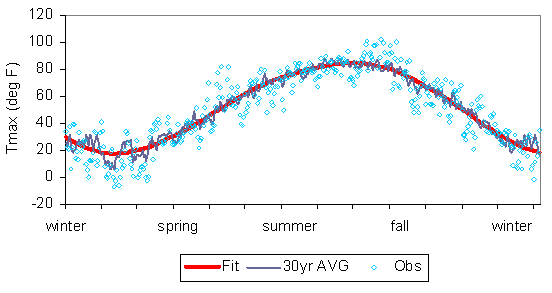A filter is a linear operation that converts one time series into another (Chatfield, 1995). Low-pass, band-pass and high-pass filters are used to separate different signals from a time series.
Application of a low pass filter to a climate time series removes high frequency fluctuations from the time series. Figure 1 shows a time series of daily maximum temperature 30 year (1971 - 2000) averages, containing high frequency signal, and a smooth fit to this using Equation 1. This smooth fit is an example of a low pass filter.
 |
| Figure 1. Fit of the Low Pass filter to 30 year daily averages of the daily maximum temperature time series at Bismarck, North Dakota. This is shown together with observations for December 1970 through December 1971 |
| Equation 1 | |
|
Tday is
the ordinate of the Low pass filter |
REFERENCE
Chatfield, C, 1995, The analysis of Time Series, 4th edition. Chapman & Hall